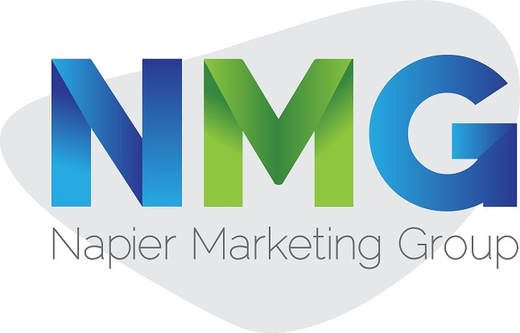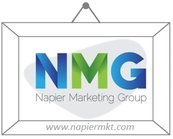KPIs to monitor the success of your online storE
Everyone is fallible. Your marketing and sales strategy might stand to improve in some areas. But what will you actually do about it? You could have some suggestions for improving your online store's performance. But you can be only wasting your money. But when it comes to achieving your company objectives, a data-driven approach eliminates all uncertainty. It will enable you to more effectively hone and optimize your plan. You may make critical business decisions, gain a deeper understanding of your consumers, and ultimately boost your revenues by establishing and monitoring KPIs.
Here is some of the most popular e-commerce KPIs:
1. Traffic
Getting customers to your website is the first challenge an online store must overcome. You probably employ a variety of marketing and advertising strategies to achieve this. You can precisely determine how effectively these techniques are functioning by measuring traffic. Most of the traffic for online merchants comes from sponsored and organic search.
What will you do with this knowledge is the question at this point. If you notice a lot of social traffic, for instance, step up your social media marketing to bring in additional customers. You should also think about what isn't working. Perhaps despite your best efforts, you aren't receiving as much organic traffic as you would like despite your on-page SEO efforts.
2. Cart Abandonment
The rate at which visitors add things to their carts but then leave the site without checking out is known as the cart abandonment rate. Naturally, this is important because a prospective sale was missed. About three out of every four users, on average, leave their trolleys. How would you rate your online store?
Your website, app, or platform may have friction points that discourage consumers from making purchases if your cart abandonment rate is high. And it's crucial to keep an eye on this to see if your cart abandonment prevention strategies are effective.
3. Average Order Value
The average order value reflects the typical amount each consumer spends. You can improve your profits without bringing on a ton of new clients if you can raise this value. You might be curious as to what an effective AOV looks like. The fact is that there are differentiating aspects, such the business you work in or the technology you employ. Optimizing your online store is one of the other ways to raise AOV.
Upselling things on your website are one incredibly powerful strategy. A Cross-selling item is another strategy to raise AOV. You make relevant product or add-on recommendations at this point to raise the total cost. If you use some of these strategies and are successful in raising AOV, you can maximize every customer interaction.
4. Conversions
Conversion rate optimization is without a doubt your top priority, yet it shouldn't be your sole KPI. However, this is challenging to accomplish, as you unfortunately know. Are you aware that internet shoppers worldwide only convert at a rate of 2.58 to 2.23 percent?
You may assess the effectiveness of your marketing and sales initiatives by monitoring conversion rates. The Google Analytics e-commerce section contains tons of data that you may browse. This covers things like sales, revenue, conversion rates, and more.
5. Customer Lifetime Value
Customer lifetime value is the total amount of money you may anticipate making from a single customer over the course of their entire association with your business. Naturally, you want clients to keep returning for more. Additionally, their value increases the longer they remain customers of your business.
Calculate a customer's worth in relation to what it will spend to get them. Your acquisition approach will benefit from this. By concentrating on customer experience and customer retention, CLV can be raised most effectively overall. Click here to learn more about customer behavior.
Here is some of the most popular e-commerce KPIs:
1. Traffic
Getting customers to your website is the first challenge an online store must overcome. You probably employ a variety of marketing and advertising strategies to achieve this. You can precisely determine how effectively these techniques are functioning by measuring traffic. Most of the traffic for online merchants comes from sponsored and organic search.
What will you do with this knowledge is the question at this point. If you notice a lot of social traffic, for instance, step up your social media marketing to bring in additional customers. You should also think about what isn't working. Perhaps despite your best efforts, you aren't receiving as much organic traffic as you would like despite your on-page SEO efforts.
2. Cart Abandonment
The rate at which visitors add things to their carts but then leave the site without checking out is known as the cart abandonment rate. Naturally, this is important because a prospective sale was missed. About three out of every four users, on average, leave their trolleys. How would you rate your online store?
Your website, app, or platform may have friction points that discourage consumers from making purchases if your cart abandonment rate is high. And it's crucial to keep an eye on this to see if your cart abandonment prevention strategies are effective.
3. Average Order Value
The average order value reflects the typical amount each consumer spends. You can improve your profits without bringing on a ton of new clients if you can raise this value. You might be curious as to what an effective AOV looks like. The fact is that there are differentiating aspects, such the business you work in or the technology you employ. Optimizing your online store is one of the other ways to raise AOV.
Upselling things on your website are one incredibly powerful strategy. A Cross-selling item is another strategy to raise AOV. You make relevant product or add-on recommendations at this point to raise the total cost. If you use some of these strategies and are successful in raising AOV, you can maximize every customer interaction.
4. Conversions
Conversion rate optimization is without a doubt your top priority, yet it shouldn't be your sole KPI. However, this is challenging to accomplish, as you unfortunately know. Are you aware that internet shoppers worldwide only convert at a rate of 2.58 to 2.23 percent?
You may assess the effectiveness of your marketing and sales initiatives by monitoring conversion rates. The Google Analytics e-commerce section contains tons of data that you may browse. This covers things like sales, revenue, conversion rates, and more.
5. Customer Lifetime Value
Customer lifetime value is the total amount of money you may anticipate making from a single customer over the course of their entire association with your business. Naturally, you want clients to keep returning for more. Additionally, their value increases the longer they remain customers of your business.
Calculate a customer's worth in relation to what it will spend to get them. Your acquisition approach will benefit from this. By concentrating on customer experience and customer retention, CLV can be raised most effectively overall. Click here to learn more about customer behavior.




